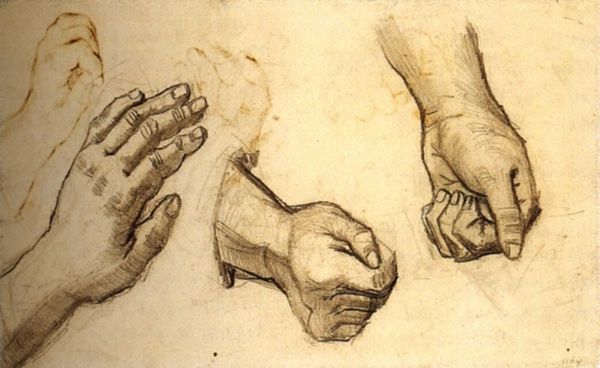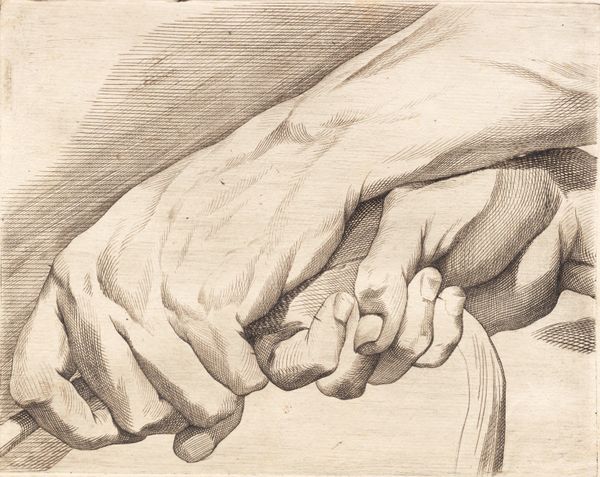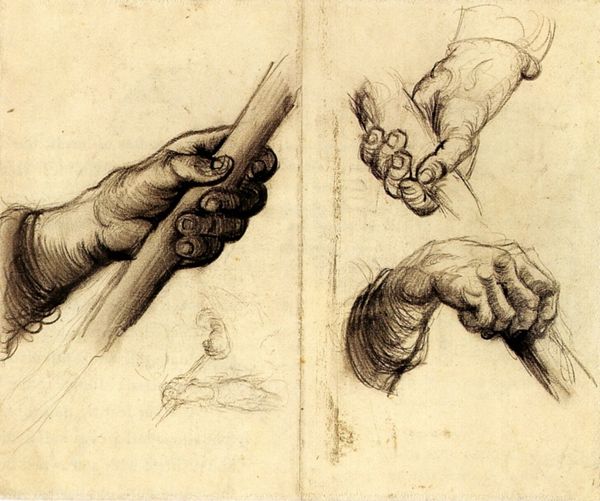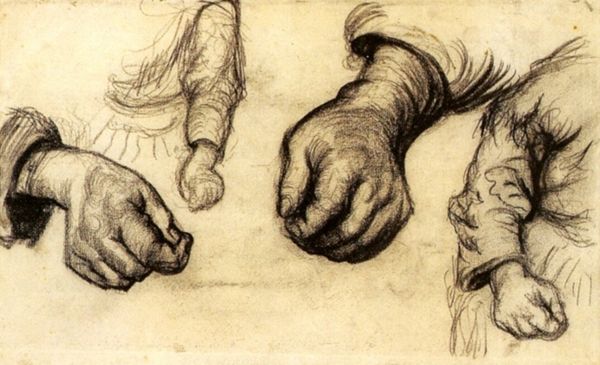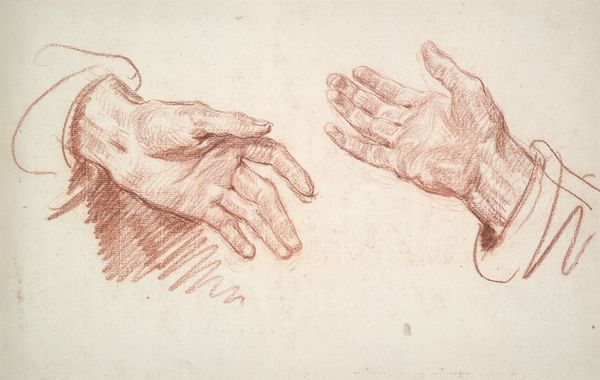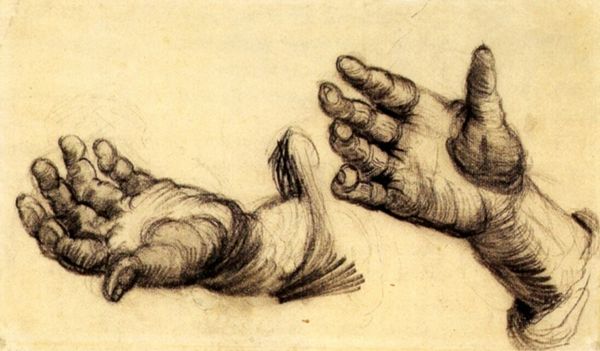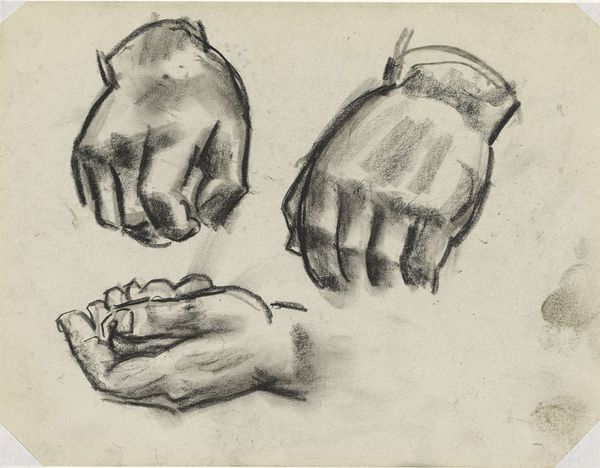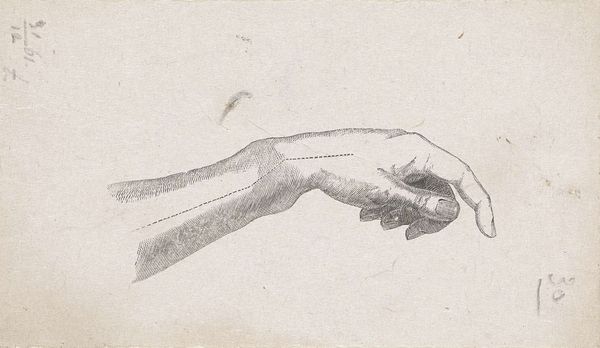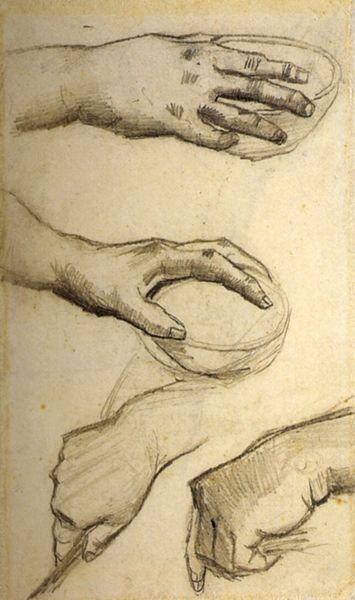
drawing, graphite, charcoal
#
portrait
#
pencil drawn
#
drawing
#
pencil sketch
#
charcoal drawing
#
figuration
#
pencil drawing
#
human
#
graphite
#
portrait drawing
#
charcoal
#
history-painting
#
realism
#
arm
Copyright: Public domain
Editor: This is "Three Hands" by Vincent van Gogh, from 1884. It's a drawing done with charcoal and graphite. There's a striking realism in how he captures the different positions; they almost feel like portraits of gestures. What can you tell me about this work? Curator: Looking at these hands, I see Van Gogh wrestling with representation and the societal implications of labor. Consider the period—the rise of industrial capitalism, the dehumanization of the working class. These hands, rendered with such palpable texture and detail, could be seen as a response, an attempt to reclaim the dignity inherent in physical work. Do you see how the positioning changes from open and receptive, to a closed fist? Editor: I hadn't thought of it in terms of labor. I was just focusing on the skill involved in depicting them. The bottom hand seems tense, almost angry. Is that connected to what you were saying? Curator: Precisely! The clenched fist, in particular, resonates with the burgeoning labor movements of the time. Think of the social unrest, the strikes, the struggle for workers' rights. Van Gogh, even in a seemingly simple study, might be subtly commenting on this struggle, using the hand as a symbol of both vulnerability and power. How does the use of monochrome add to this interpretation? Editor: I guess the lack of color focuses our attention on the form and the texture, making the hands feel more raw and real. Almost like emphasizing the hardships they've endured. Curator: Exactly. The choice of medium, the starkness of the lines – it all contributes to a reading that moves beyond mere anatomical study. It transforms the hands into emblems of the human condition, marked by labor, resilience, and perhaps even resistance. Editor: That gives me a completely new way to appreciate the artwork, beyond just seeing it as a technical drawing. It’s like he’s giving voice to the voiceless through these gestures. Curator: Precisely, and that is how we connect art to life, to social realities. The hands are speaking volumes, aren't they?
Comments
No comments
Be the first to comment and join the conversation on the ultimate creative platform.

